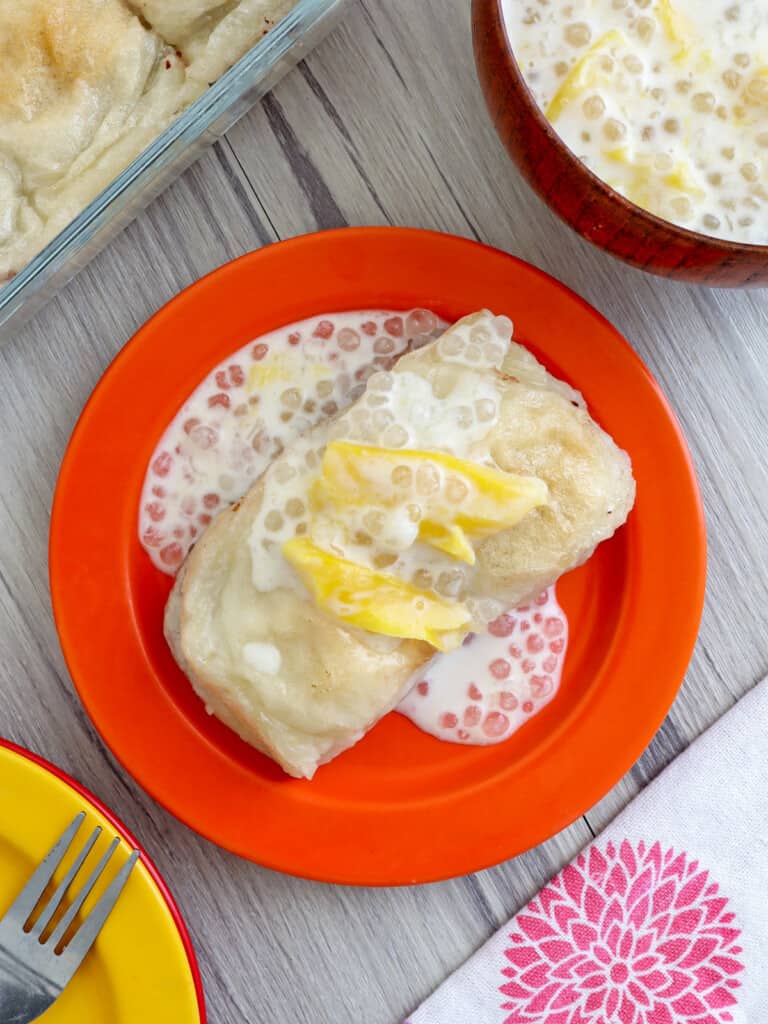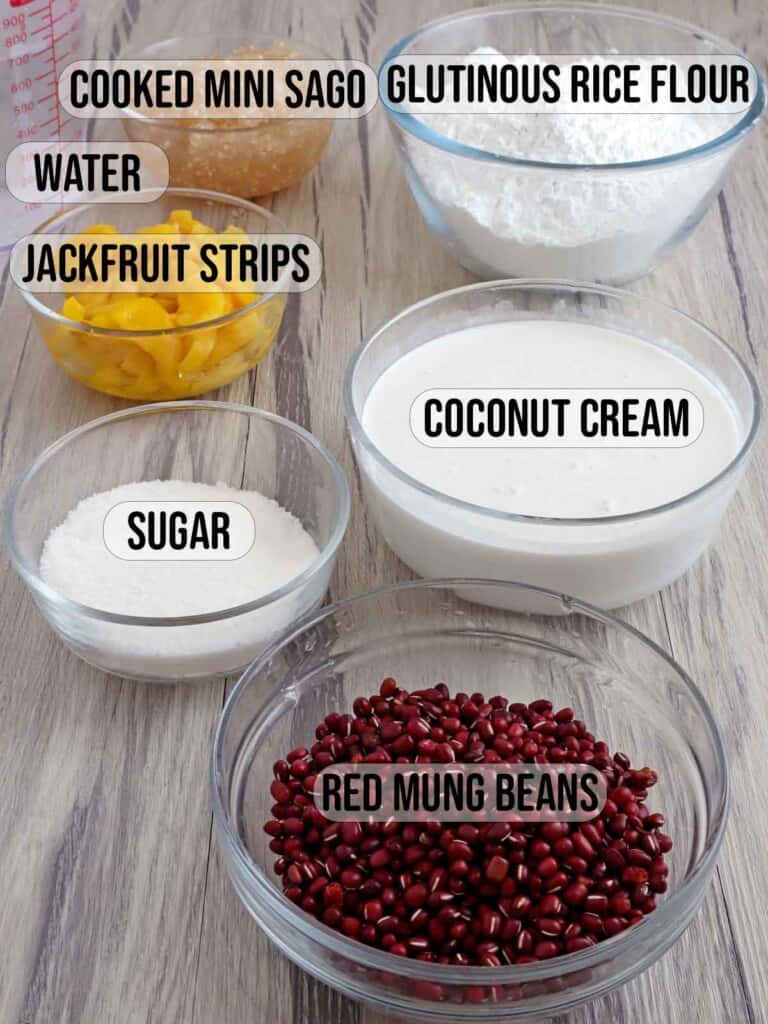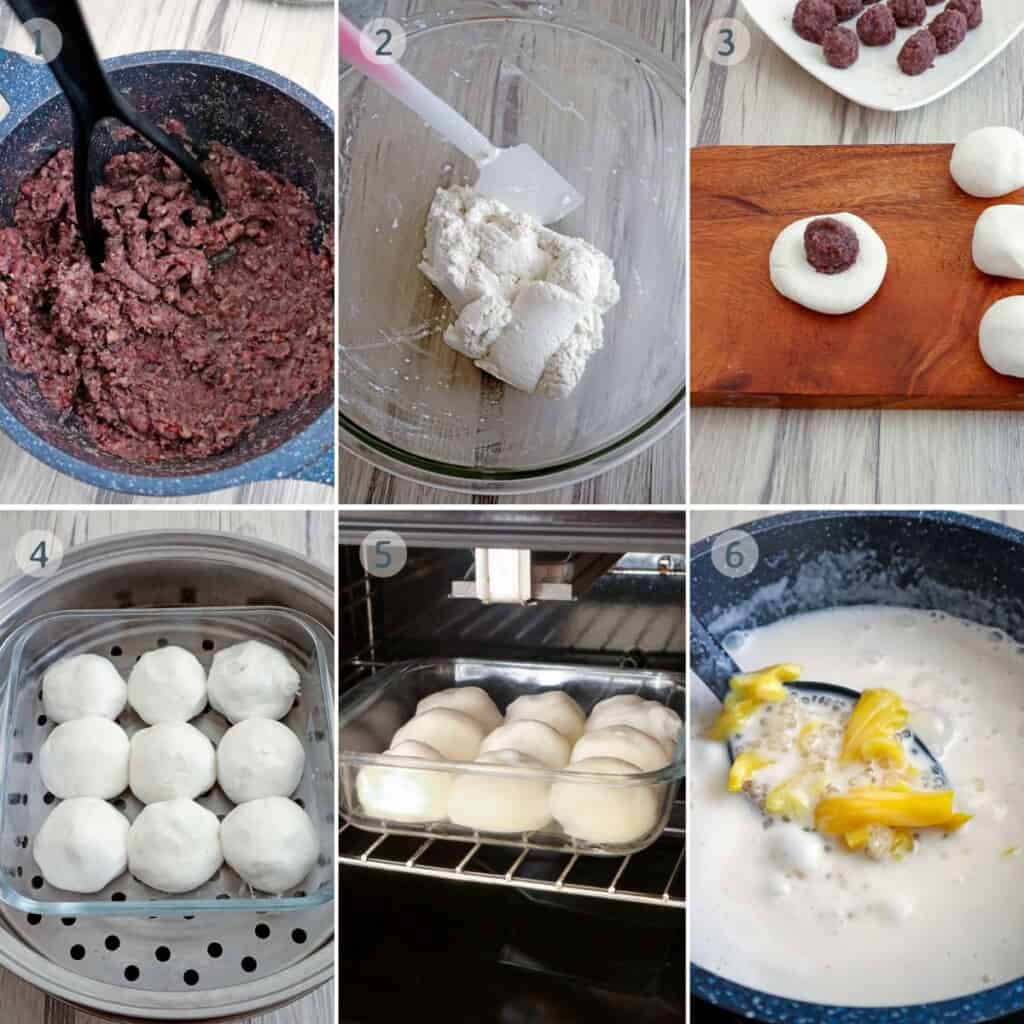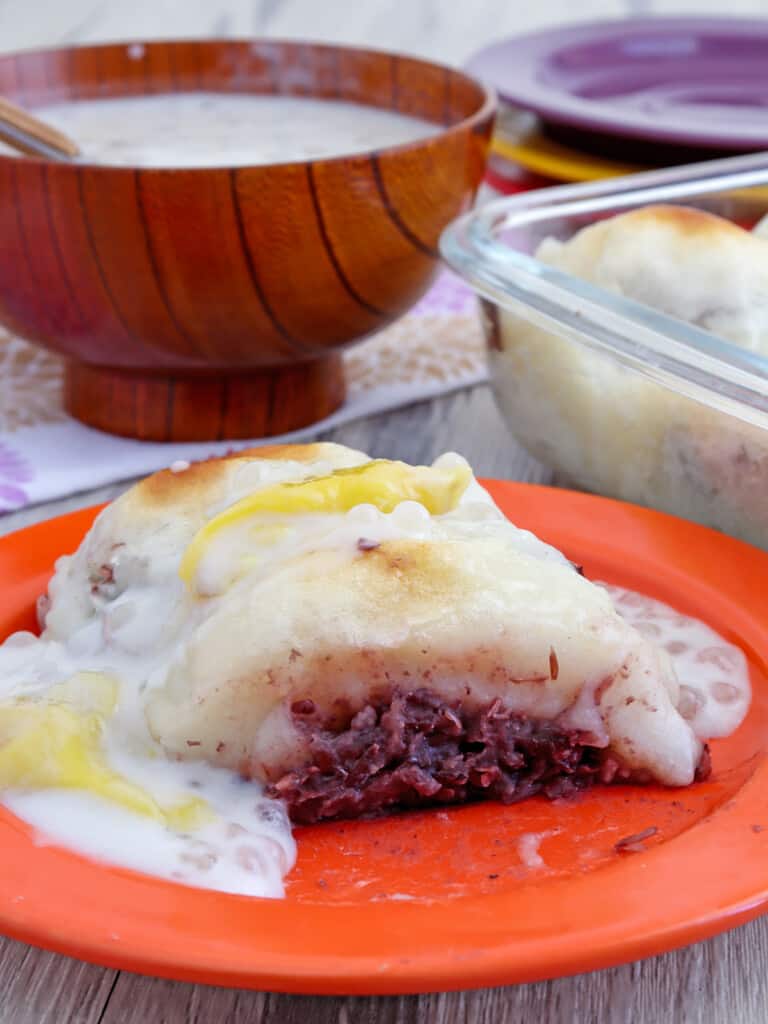Looking for the ultimate dessert? Try Bibingkoy with red mung bean filling and creamy ginataan sauce. It’s soft, chewy, and a delightful medley of flavors and textures that will have you wanting more!

Bibingkoy was created by Lola Ika, a local magkakanin, in her humble stall in the Cavite City public market before the Japanese War era. Her daughter, Aling Lolit, who learned to make the delicacy from her, continues the tradition, and it’s said that their version remains the best and the most popular in Cavite to date.
Similar to the Mochi of Pampanga and Hibok-hibok of Rizal, which have relatively the same ingredients, bibingkoy is a grilled glutinous sticky rice dumpling filled with sweetened mung bean paste and served with a creamy ginataan sauce with jackfruit and sago. It’s like buchi and ginataan rolled into one special treat!
Ingredients notes

- Red Mung Beans– Green mung beans would also work for this recipe. You can also use ready-made red bean paste available at most Asian supermarkets to save time.
- Glutinous Rice Flour– also known as sticky or sweet rice flour. If using glutinous rice, soak it overnight, drain the water, and grind it into a fine powder using a blender or food processor.
- Coconut Cream– locally known as kakang gata. This first extraction has a richer and more concentrated flavor. You can use freshly pressed or canned for convenience.
- Jackfruit– fresh or bottled. If using store-bought sweetened jackfruit, drain well as they’re usually packed in heavy syrup, which can make the dish overly sweet.
- Mini Sago Pearls– mini or regular-sized sago. You can buy already cooked in the wet markets or cook your own by following my how-to-cook sago tutorial for the chewiest texture!
- Sugar– to sweeten the filling and the sauce. You can substitute brown sugar for a touch of molasses flavor.
- Water– for soaking the beans and to make the dough.
Bibingkoy instructions

- Prepare mung beans– soak mung beans in water overnight. Drain well and cook in a pot with fresh water until tender. Remove from heat and mash until smooth. Add sugar to sweeten and cornstarch slurry to thicken. Cool slightly and transfer to a bowl, pressing a cling wrap on the surface. Refrigerate to cool completely. Shape into balls and set aside.
- Make sticky rice dough– place glutinous rice flour in a bowl and slowly add the water. Knead until the smooth, pliable dough forms.
- Form dumplings– scoop dough into portions and flatten into a circle. Place a red bean ball in the center of the dough and fold the dough around the filling. Form into a smooth, round ball.
- Steam– Arrange the sticky rice dumplings on a lightly oiled baking dish in a single layer. Place in a steamer and cover with a kitchen towel and steamer lid. Steam for about 20 minutes.
- Bake– place in a 400 F oven and bake for about 8-10 minutes or until tops are golden.
- Make ginataan sauce– combine coconut cream, water, and sugar in a pot. Bring to a simmer, stirring regularly until sugar is dissolved. Thicken with cornstarch slurry, whisking vigorously to prevent lumps. Add cooked mini sago and jackfruit strips.

Cooking time
- The flour and water ratio for the dough may vary depending on the brand of glutinous rice flour used. To check for the right consistency, pinch a small piece of dough and flatten it with your fingers. Add more water in one-tablespoon increments if the dough feels dry and falls apart. Add more flour as needed if it feels too wet and overly sticky.
- You can make the filling ahead of time. Allow to cool completely to prevent tearing the rice cake dough with escaping heat.
- For easier filling of the dough, shape your mung bean paste into small balls.
- For a more uniform size, use a small scoop to portion out the dough and use the palm of your hands to roll each portion into a ball and flatten it into an oval shape about ¼ thick.
- If the dough sticks, wet your hands between shaping or grease your palm with a little oil.
- Cover the steamer lid with a kitchen towel or cloth to avoid water dripping on the rice balls.

How to serve and store
- Bibingkoy is delicious as a midday snack or after-meal dessert. Pour the sauce over the sticky rice dumpling or serve on the side.
- Store leftover bibingkoy and sauce separately in airtight containers and refrigerate for up to 3 days.
- To warm up cooked bibingkoy, heat in the oven. To reheat the sauce, simmer in a saucepan over low heat. Add water or coconut milk to loosen the consistency.